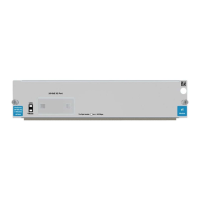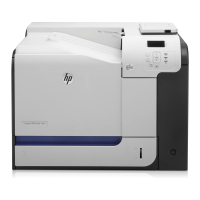HP NonStop SSH Reference Manual SSH and SFTP Client Reference • 209
165527760 bytes transferred in 86 seconds ( 1.8MB/s)
By default the number of bytes transferred is set to the EOF value of a file. This ensures consistency between the size of
a file displayed by the ls -l command and the summary information. But the size of the actual content of a Guardian edit
or structured file can differ greatly from the EOF value.
If it is of interest to see the actual number of bytes transferred in the transfer summary, then a define
=SFTP^BYTES^TRANSFERRED can be set to ACTUAL:
ADD DEFINE =SFTP^BYTES^TRANSFERRED, CLASS MAP, FILE ACTUAL
The default value for this define is EOF, meaning the "bytes transferred" line contains the EOF value of a file in case the
transfer was successful.
The define must exist in the environment of the SFTP[OSS] client.
Specifying File Names on the NonStop System
When specifying directories, subvolumes, or files on the NonStop system, the SSH2/SFTP implementation supports
flexible ways to deal with the various notations:
• Files and directories under the OSS file system are specified using the normal Unix file name notation such as
"/home/tb" for a directory and "/home/tb/myfile" for a file.
• Files and directories under the Guardian file system can be specified in two ways:
o Using the normal Guardian notation, such as "$data1.tbhome" for a subvolume or "$data1.tbhome.myfile"
for a file. Subvolume changes can be specified using the normal syntax such as "cd $data1.tbhome" or "cd
mysubvol". Note that a subvolume needs to be present in a "cd" command.
See the note below regarding Guardian file name notation.
o Using the "Unix-style" notation for Guardian files. For instance, to specify the fully qualified file name
"$data1.testvol.myfile", you can use the notation "/G/data1/testvol/myfile".
Note: Unlike with HP NonStop FTP, there is no explicit command ("quote oss" or "quote guardian") to switch between
the two notations. The Guardian file name notation is only allowed if parameter SFTPALLOWGUARDIANCD is set to
true, and if a "cd /G" command has first been issued to switch to the Guardian notation. The default for
SFTPALLOWGUARDIANCD is false; for details, please refer to the description in chapter "SSH2 Parameter
Reference".
Extended Syntax for Creation of New Guardian Files
By adding a comma and a list of options to a filename, the attributes for this file can be controlled in:
• "get" commands executed on the NonStop system.
• "put" commands executed on the remote system.
In both cases, the file code, file type, and extent settings of the new file to be created can be influenced as shown in the
following examples:
• "get txe txe,700: will create a code 700 file
• "get bigfile bigfile,0,500,500,950': will create a file with ext (500,500) and maxextents 950
• "get keyseq keyseq,k,0,2,2,500,255,100,0,2048": will create a keysequenced file with ext(2,2), maxextents 500,
recordlen 255, keylen 100, keyoff 0, blocklen 2048
• "get relative relative,r": will create a relative file
• "get entryseq entryseq,e": will create an entry sequenced file
• "get ascii editfile,101": will create a guardian edit file

